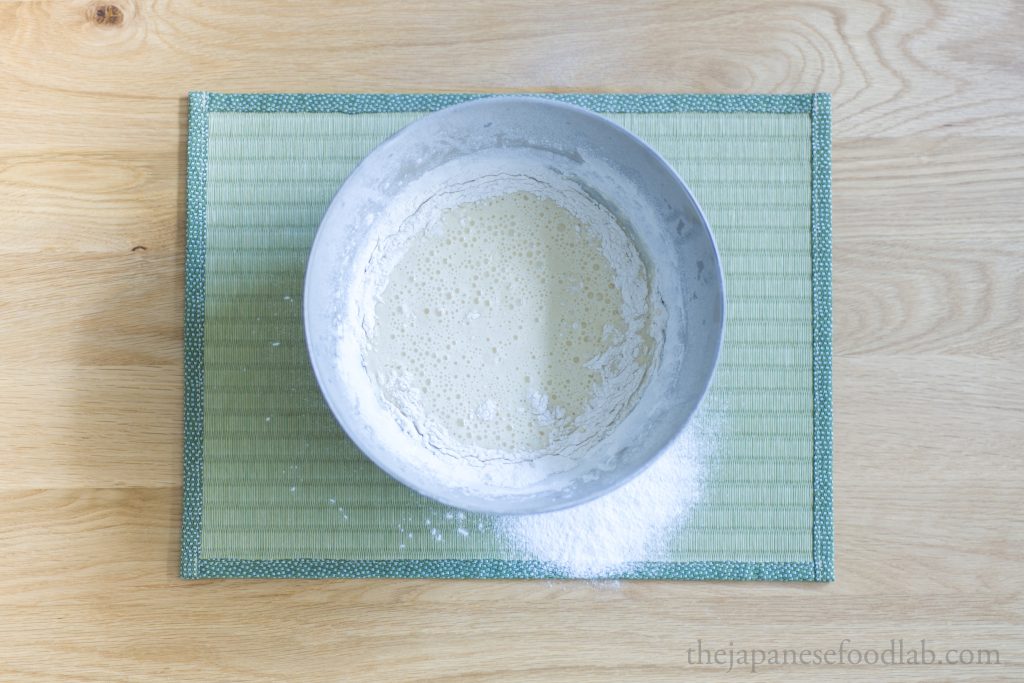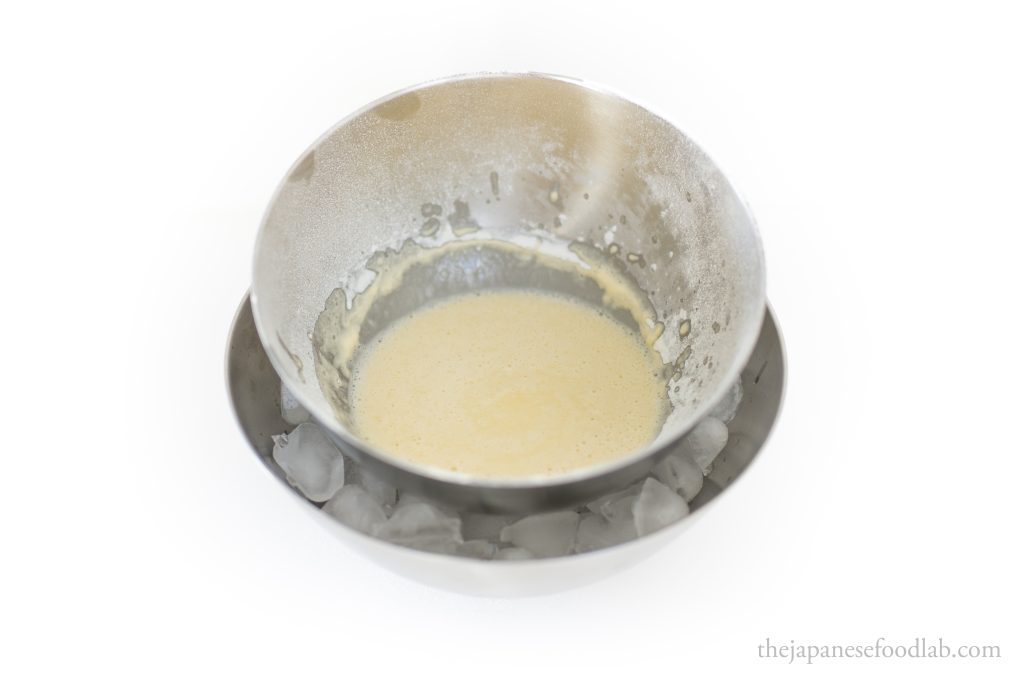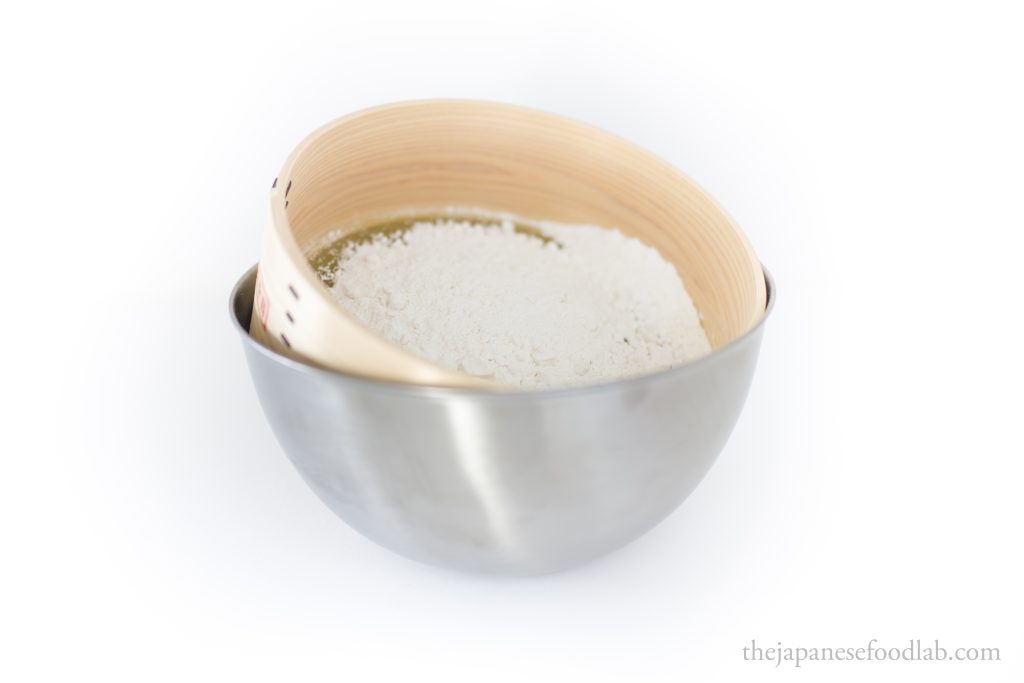This article builds on what to do after you make the best tempura batter. It is part of our series on making tempura.

The lifespan of tempura batter.
Now that we’ve gone through all the trouble to source our tempura flour, prepare ice water and then mix up our batter, how do we get the most out of it?
As gluten continues to form even without agitation, our tempura batter will start to deteriorate from the very moment it’s made. This isn’t helped by the fact that the bowl of batter usually sits next to a pot of hot oil, slowly heating up the batter and thus increasing the rate of its deterioration by speeding up the rate of gluten development.
To counteract this, it’s recommended that you have an ice bath prepared on which your bowl of tempura batter should sit in to maintain it at a cold temperature. The ice bath should be made from a mixture of ice and water to increase the surface area of the bath in contact with the batter bowl. If the ice bath consists of only ice, it will actually not cool the tempura batter down efficiently as there won’t be enough contact between the ice and the bowl.
But even before this, it’s becoming more and more commonplace for chefs to decant their tempura batter from the bowl they mixed it in into another. This is because there tends to be a ring of unmixed flour that lines the tempura mixing bowl. While this unmixed flour was traditionally seen as a hallmark of good tempura batter mixing, it is now acknowledged to unwantedly increase the amount of gluten development in the batter if it falls in later on. To avoid this, it’s much better to pour the batter into a clean bowl with no excess unmixed flour.

Building intuition
While we try as much as possible to provide you with a tempura batter recipe with accurate measurements, we’ve learned that there exists a multitude of factors out of our control that will influence the final consistency of your tempura batter. From flour moisture content, protein content and age, all the way to ambient humidity and temperature. As such, our main advice to you, which may be cliche and overused to the point of banality, is to practice. Practice over and over again until you know that the batter is just right from the feel of the ingredients as you drag them through the batter, or that the slight lack of resistance when whisking your batter indicates the need for a dash more flour.
As you practice, you’re not only developing the technical skills of frying tempura, but also an intuition of when things are slightly off as well as what you can do to fix that.

Adjusting batter consistency on the fly
If you were to observe chefs at famous tempura establishments, you’ll notice that they make their batter from feeling alone with no weighing scales or measuring cups at hand. Whilst this gives us an idea of what’s achievable through many years of practice, we feel that there is something better we can learn from them. After whisking up their batter, they sometimes make minor tweaks to their batter, mainly the occasional extra dusting of flour or a little addition of water. This is valuable as your tempura batter is dynamic and constantly changing as it sits on the counter. We should therefore not be scared to make minor adjustments to our batter to try and maintain its consistency for longer.
Learning when to make a new batch of tempura batter
Whilst it’s difficult to say with absolute precision when your tempura batter is spent, we simply ask that you remain observant to how the crust on your tempura changes as the batter ages. If you suddenly find that the quality of your tempura has started to decline, your first response should be to try making a new batch of tempura batter and see if that fixes the problem. Otherwise, we recommend looking into the age of your oil or how you have prepared your ingredients. Most of the time, a freshly made batch of batter over a bowl of ice lasts for around 10 to 15 minutes maximum.